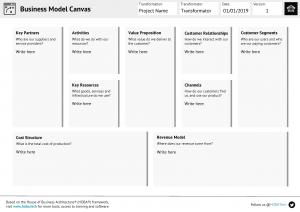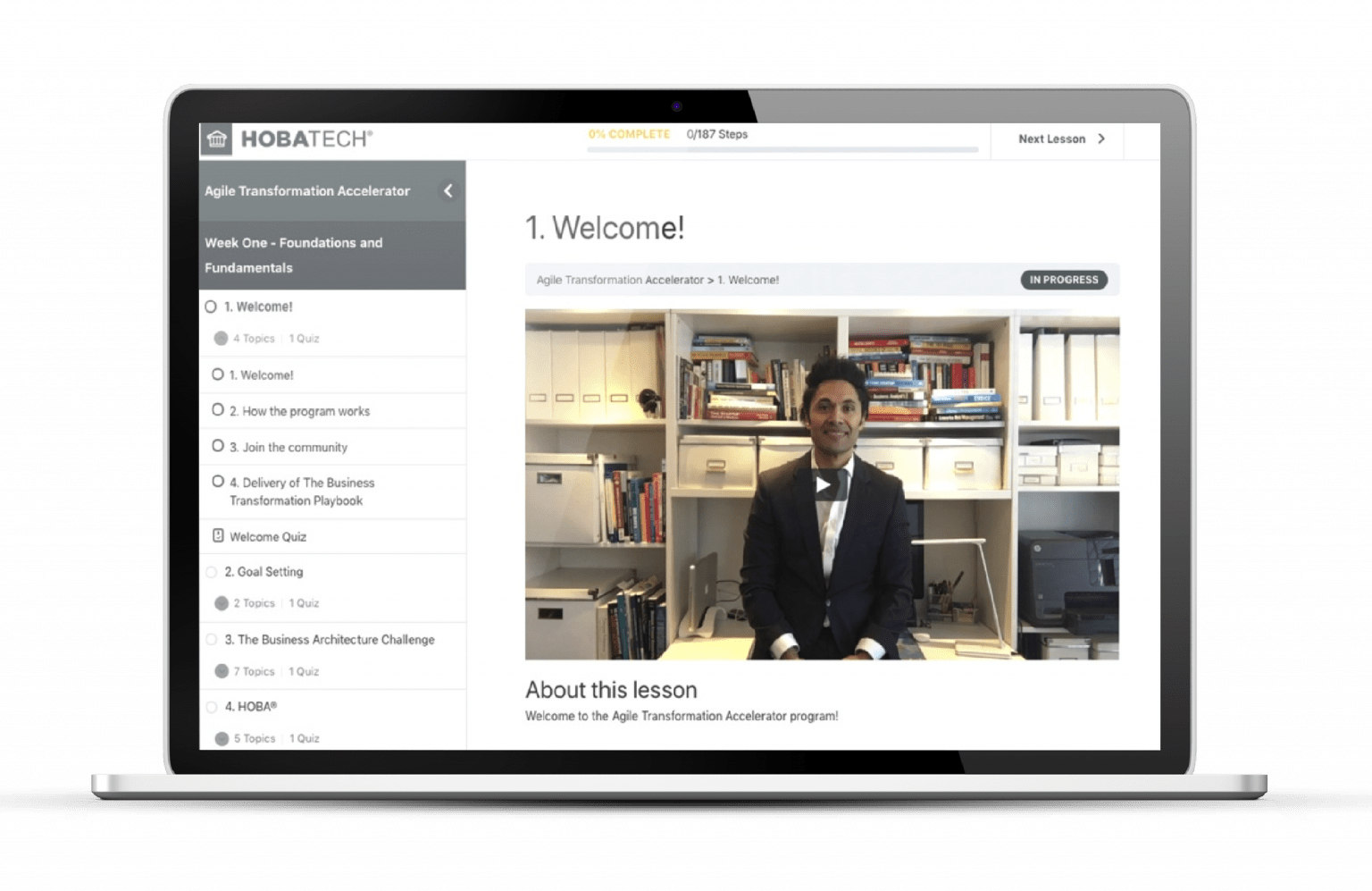Download Business Model Canvas Blueprint for Agile Transformation
Unlock the Business Model Canvas (BMC) Blueprint designed by Osterwalder and Pigneur (2010). This essential tool outlines nine key elements of an organisation’s business model, including value proposition, infrastructure, customer segments, and finances.
Instant Download of Business Model Canvas Template

Download this Blueprint For Free!
The Business Model Canvas (BMC), developed by Professor Yves Pigneur and Dr Alexander Osterwalder, which was based on Osterwalder’ PhD thesis (1) is a template used to identify the key components of an Organisation’s business model.
The BMC is touted as a ‘business model on a page’, as it provides on a single page, a conceptual view of the business model components.
The BMC is best suited for startups or new businesses, or where the Organisation is undecided about its business strategy, and wants to develop one.
The BMC provides two (2) dimensions, or ‘levels’ when developing the business model – a conceptual level, and a logical level:
Conceptual and Logical Levels of Business Model Development"

At A Conceptual Level
The BMC maps the nine (9) components that the authors consider conceptually necessary a business should consider in its mission to create value (i.e. create and sell its products and services that customers want or need at a profit – the margin between the revenue received less the cost of goods sold, and the cost to maintain the business, shown across the bottom of the canvas).

At A Logical Level
Now you have identified conceptually the BMC elements (‘business model’), the next question is ‘how do they ‘logically’ fit together in practice? You then need to test this ‘hypothesis’ that they logically fit and work together to form a viable business model (i.e. can you generate the revenue from the product and services you sell, with the key relationships in place, to your target market using your key activities, to sell it at a profit)?
How to Utilise the Business Model Canvas Blueprint
The BMC provides the ability to visualise the key components, that according to the authors should exist. Those key components are as follows:
Value Propositions
What are you producing (product or service) to meet a demand or need the that market is willing and able to pay?
Customer Segments
What market or (customer) segments are you targeting?
Channels
How are you delivering your product or service to your customers?
Customer Relationships
How are you going to attract and keep your customers?
Revenue Streams
What methods are you going to use to sell your products and services (e.g. direct sales, freemium, licensing etc. )?
Resources
What resources do you need to produce and market your products and services?
Key Partners
What partnerships (ie buyers, suppliers etc.) do you need to deliver your products and services?
Key Activities
What key activities do you need to do (important activities you need to do to ensure your business runs efficiency)?
Cost Structure
What are the cost of the different elements you pay for to run your business (i.e. materials, rent, payroll etc.)?
Did you know Business Model Canvas (BMC) role into the overall Business Transformation?
The BMC has its place, but mainly for startups or new businesses that needs to develop its business model. It isn’t as useful in an existing business, and shows nothing about implementation. However, it is one of the building blocks and a blueprint in HOBA® when the Organisation is changing its business model and is covered in our training along with all the other fully-editable templates plus more.



